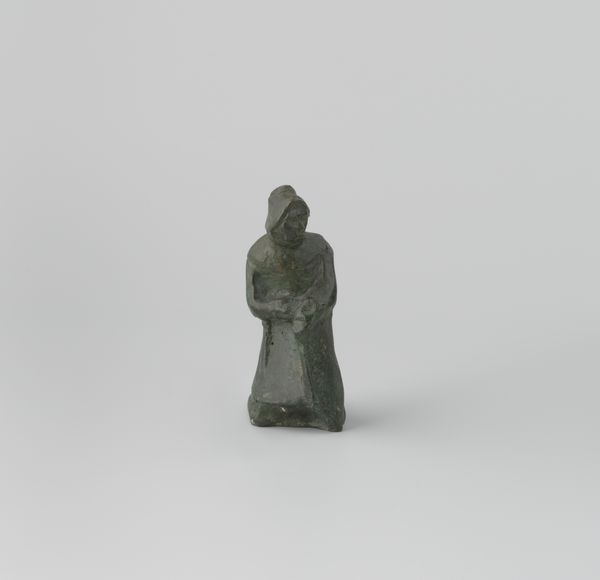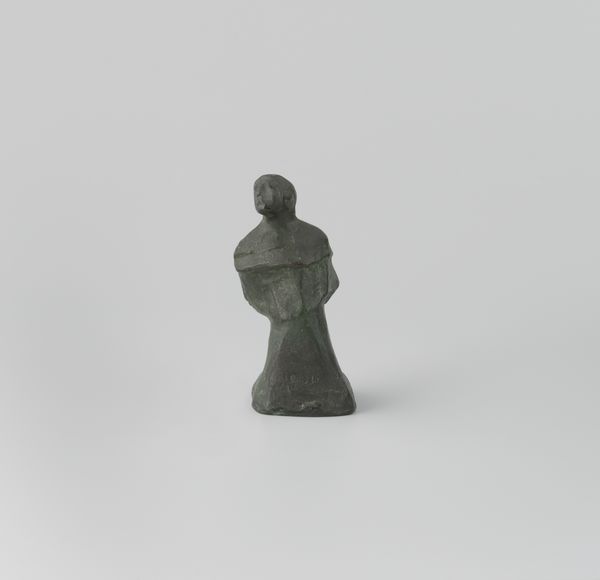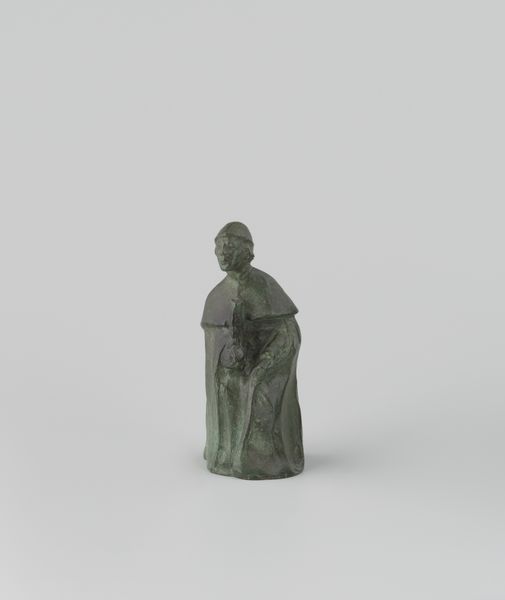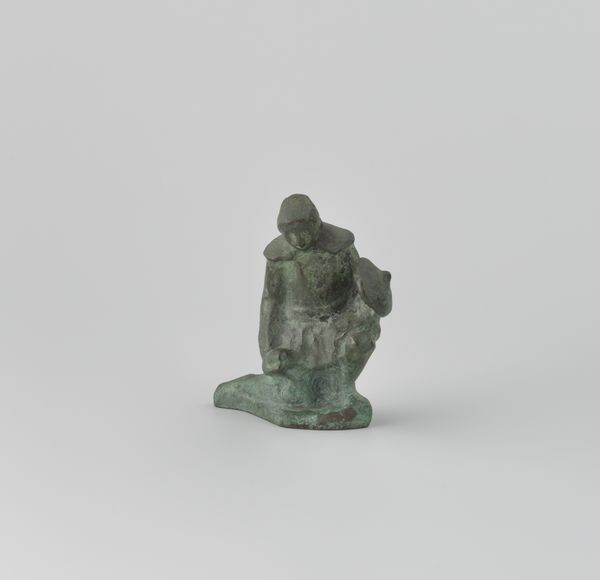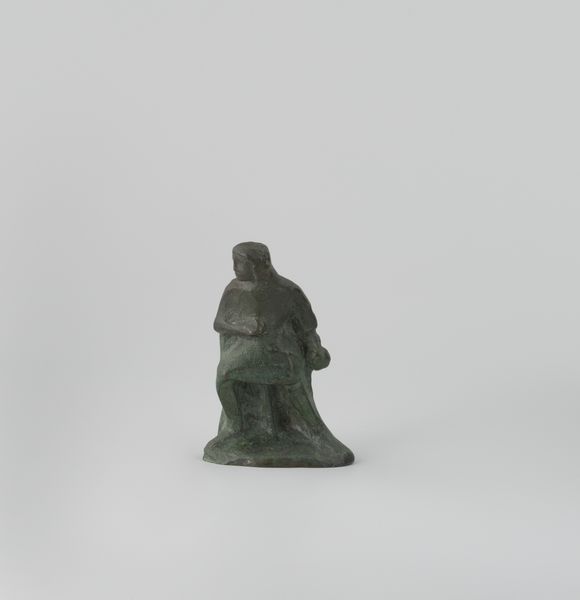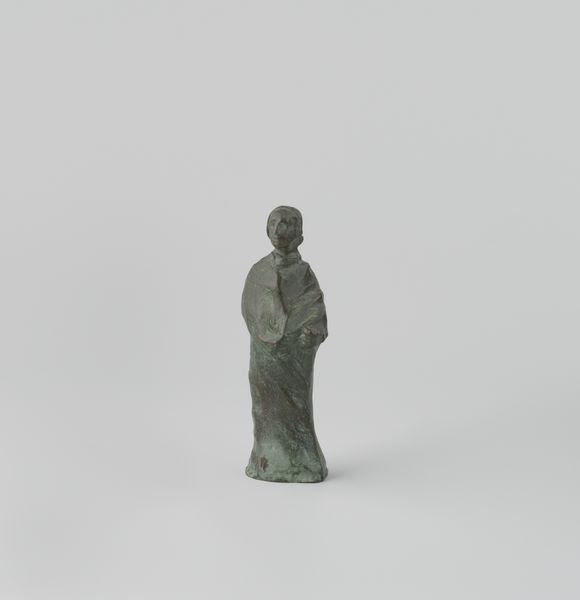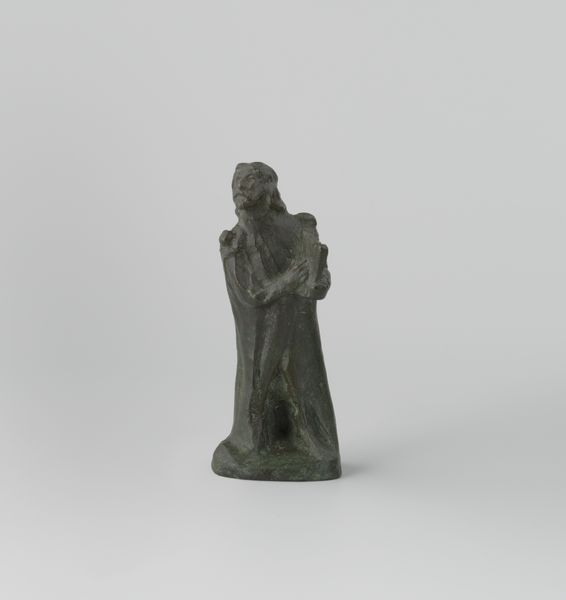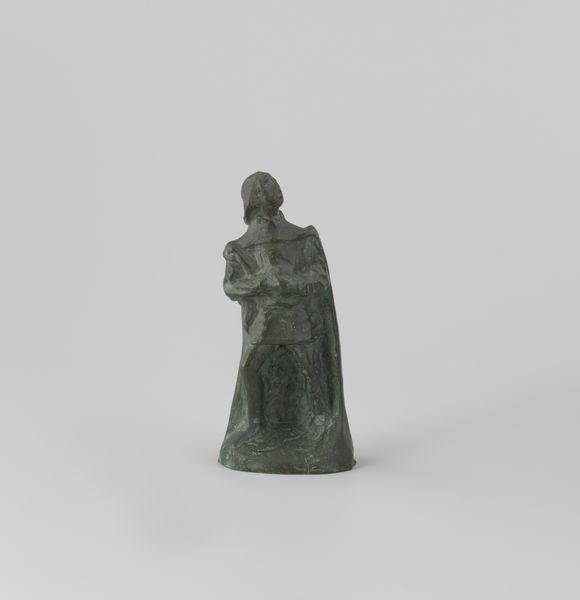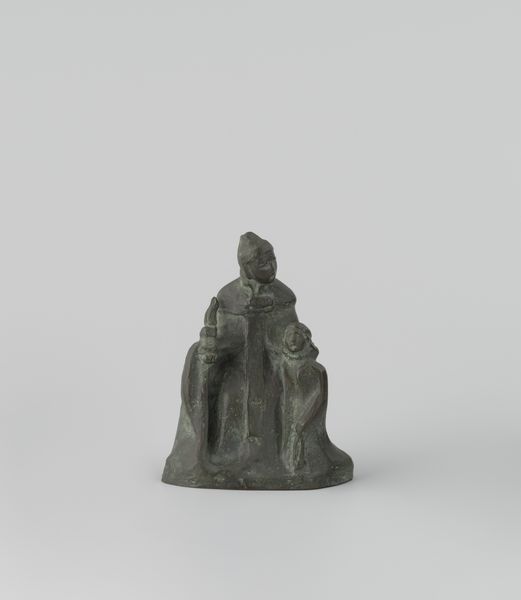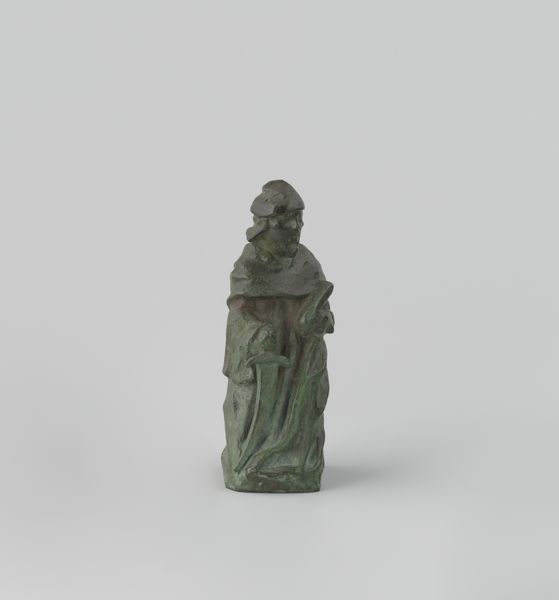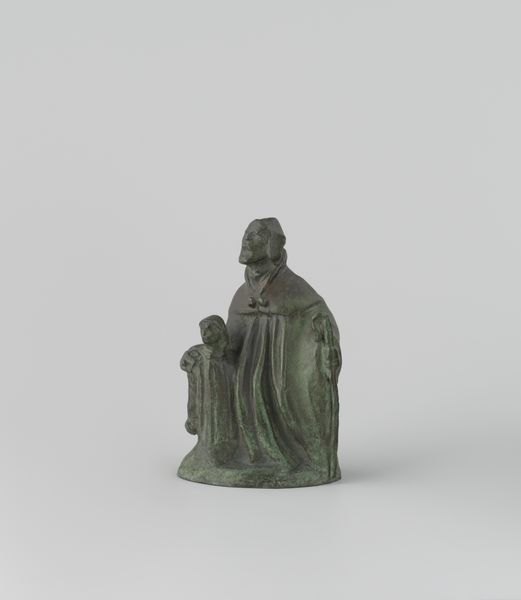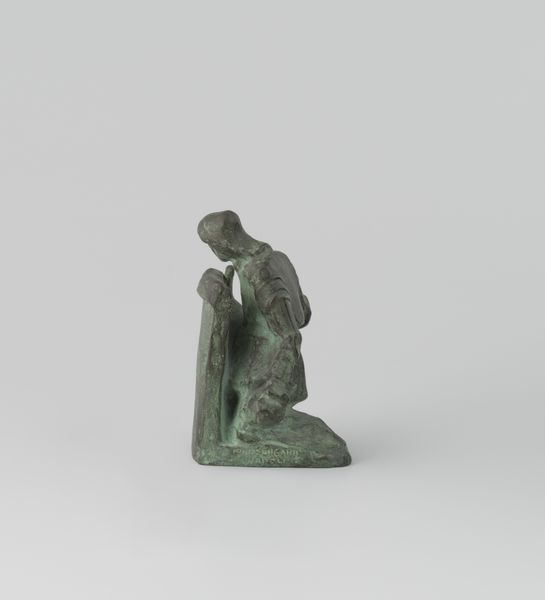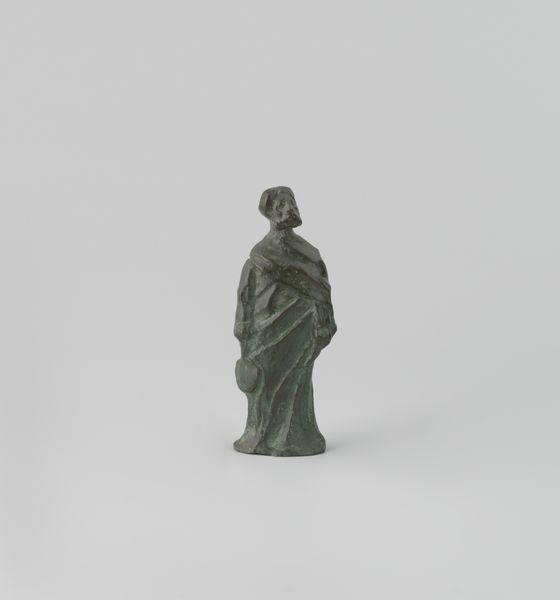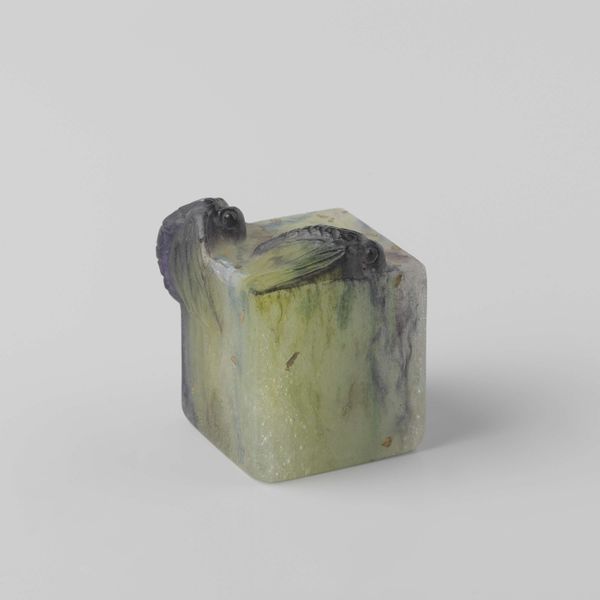
bronze, sculpture
#
portrait
#
bronze
#
figuration
#
geometric
#
sculpture
#
modernism
Copyright: Rijks Museum: Open Domain
Editor: This is "Pion 7," a bronze sculpture by Saar de Swart, made sometime between 1923 and 1925. Its simplified geometric forms are interesting... How do you read this piece, especially considering its context? Curator: It's interesting to view this sculpture through the lens of early 20th-century social movements. The geometric reduction can be seen as a departure from traditional portraiture that was aligned with specific bourgeois class structures and ideals. It’s asking us to reconsider representation and individuality, perhaps reflecting a broader interest in egalitarianism and social justice during that period. Editor: So, you are saying that it's moving away from established ways of doing things... But can abstraction really speak to egalitarianism? Doesn’t realism do a better job depicting individuals? Curator: It's not so simple. Realism, while portraying recognizable figures, often reinforced existing power structures. Who gets depicted, and how? Abstraction, on the other hand, aims to break free from those constraints. The reduction of form can be viewed as a rejection of idealized, often gendered and raced, representations. What narratives do you think emerge from this interplay between geometric forms and portraiture? Editor: That’s an interesting point about whose image gets represented and how! The limited, abstract form might be its strength... the form sort of resists easy categorization. Curator: Exactly! By resisting easy categorization, it invites us to question how we construct identities and societal roles. It encourages a more inclusive dialogue that makes it truly relevant. Editor: I see. The sculpture is more than just a portrait, but it embodies those political ideas from the 1920s around breaking social norms, and class separation! It's pretty incredible to think about how radical it was. Curator: And still is. Looking at art through this lens gives us tools for critiquing and transforming contemporary culture.
Comments
No comments
Be the first to comment and join the conversation on the ultimate creative platform.
